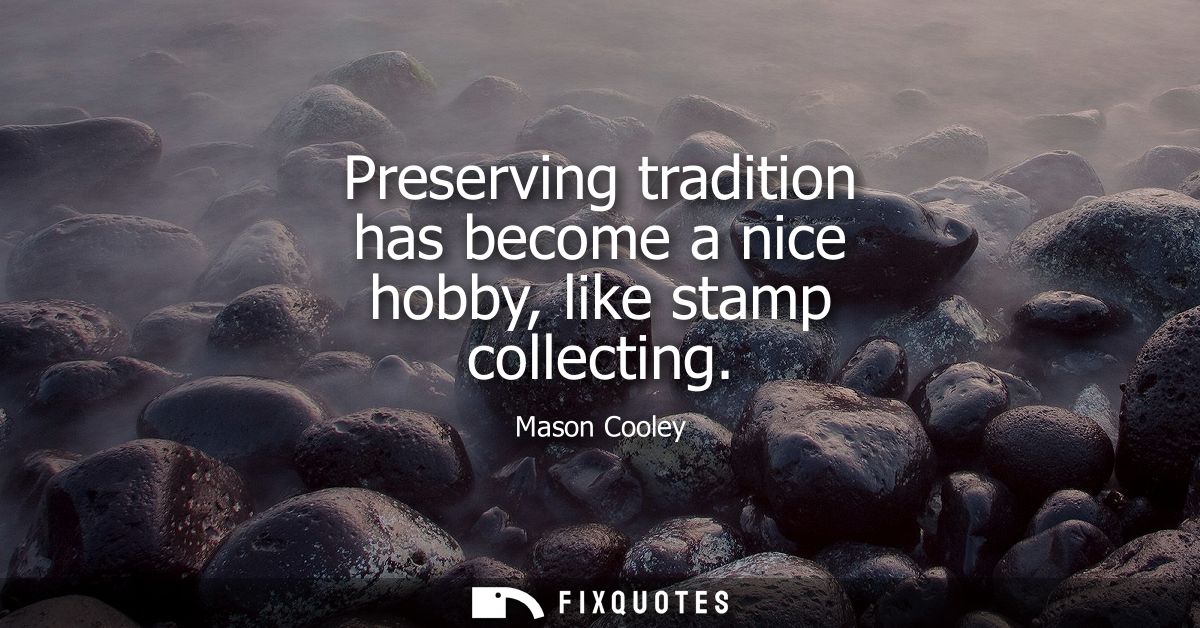"Preserving tradition has become a nice hobby, like stamp collecting"
About this Quote
Mason Cooley’s aphorism wields quiet criticism beneath its surface. By comparing the act of preserving tradition to stamp collecting, it diminishes the former’s perceived gravity, casting it as an activity of leisure rather than necessity. Stamp collecting evokes images of quiet weekends, careful curation, and the pursuit of nostalgia, an engaging pastime, certainly, but not essential to the functioning of society or the progression of culture. The comparison suggests that safeguarding traditions has, for many, slipped from being vital and communal to optional and individualized, something one might do for personal satisfaction or a sense of heritage, rather than out of real societal obligation.
Beneath the wry tone lies a meditation on modernity’s tensions with the past. Social and technological change often propels societies forward, sometimes at the expense of inherited practices or beliefs. What may have once been central to communal cohesion, the observance of rituals, the retelling of ancestral stories, the preservation of cultural artifacts, can, in a rapidly changing world, start to seem possible yet unnecessary, a hobby for the nostalgic or the conservative, rather than a vital pillar of community identity.
Cooley’s statement also raises questions about authenticity and value. Just as stamp collecting is an act of intentional curation, sorting, categorizing, perhaps displaying forgotten bits of history, so, too, does preserving tradition require a conscious commitment. Yet when tradition is detached from daily life, preserved only by enthusiasts, it risks becoming the relic of a bygone era: admired, perhaps, but no longer lived. The remark slyly critiques the way some societies now treat their traditions: as artifacts or collectibles, no longer dynamic or interwoven with daily existence.
Ultimately, the analogy serves as both a commentary and a warning. If tradition becomes merely a “nice hobby,” it signals a shift in its relevance, raising the specter of a future where cultural heritage is maintained by few, observed by fewer, and felt, perhaps, by almost none.
More details
About the Author

